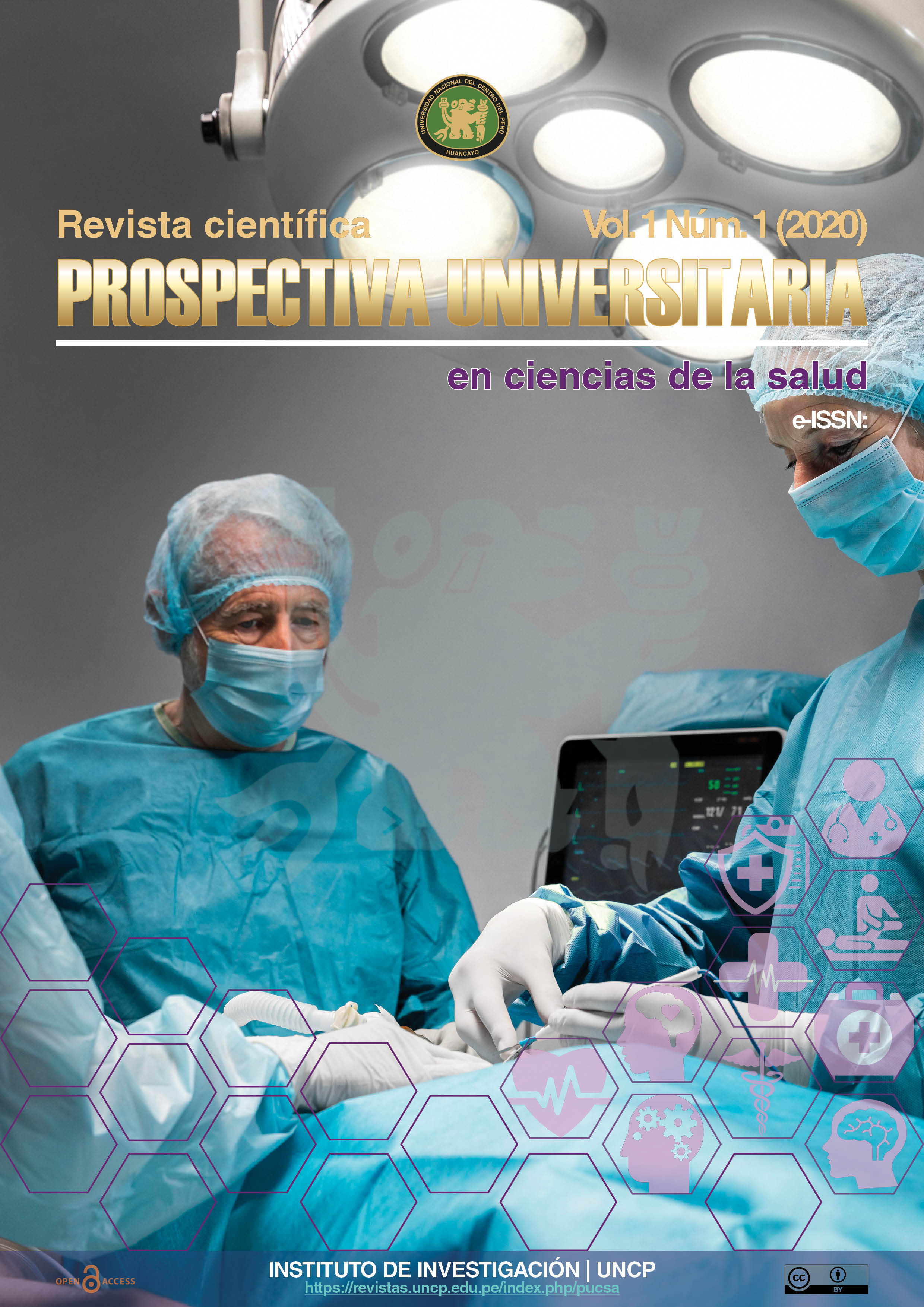Healthcare-associated infections in facilities of the Junín Ministry of Health, January 2013 - December 2017
Keywords:
infections, health care, cumulative incidence, incidence densityAbstract
In recent years, hospital-acquired infections have reached epidemic proportions in hospitals around the world. Objective: The incidence of healthcare-associated infections (HAI) was determined in facilities of the Junín Ministry of Health from January 2013 to December 2017. Material and Methods: A descriptive, cross-sectional and prospective study was conducted in health facilities by categories and focused services. Results: From January 2013 to December 2017, 334 infections were reported, of which 192 (57.4%) corresponded to surgical wounds, 46 (13.8%) to HAIs due to pneumonia and 21 (6.3%) to HAIs due to bloodstream infections. The services with the highest number of reported cases were (a) obstetrics and gynecology, (b) ICU and (c) surgery. In the Juín region, the cumulative incidence rate were for in-hospital pneumonias associated with mechanical ventilation in the adult ICU (2.71 per 1000 days of exposure to mechanical ventilation), likewise there were 0.67 bloodstream infections per 1000 days of exposure to peripheral venous catheter in neonatology and in surgery there were 0.51 x 1000 days of exposure to indwelling urinary catheter. Conclusions: Focused services and categories of care in health facilities, show high rates of HCAI in Gynecology-Obstetrics with categories III-E, II–2, II–1; ICU for adults and pediatrics in categories III-E and II–2.
Downloads
References
Agarwal, R., Gupta, D., Ray, P., Aggarwal, A. N., & Jindal, S. K. (2006). Epidemiology, risk factors and outcome of nosocomial infections in a Respiratory Intensive Care Unit in North India. The Journal of Infection, 53(2), 98-105. https://doi.org/10.1016/j.jinf.2005.10.021
Chincha, O., Cornelio, E., Valverde, V., & Acevedo, M. (2013). Infecciones Intrahospitalarias Asociadas a Dispositivos Invasivos En Unidades de Cuidados Intensivos de Un Hospital Nacional de Lima, Perú. Revista Peruana de Medicina Experimental y Salud Publica, 30(4), 616-620. Consultado el 15 de junio de 2023, desde http://www.scielo.org.pe/scielo.php?script=sci_abstract&pid=S1726-46342013000400012&lng=es&nrm=iso&tlng=es
MINSA. (2021). Norma Técnica de Salud Par Ala Vigilancia de Las Infecciones Asociadas a La Atención de La Salud. https://www.dge.gob.pe/portalnuevo/wp-content/uploads/2021/04/NTS_N163_IAAS_MINSA-2020-CDC.pdf
Navarro, R. (2012). Incidencia de Infecciones Intrahospitalarias En Establecimientos de Salud. Enero 2018 Diciembre 2011. Boletin Epidemológico, (21), 126-129. http://www.dge.gob.pe/portal/docs/vigilancia/boletines/2012/08.pdf
Quispe, Z. (2017). Situación Epidemiológica de Las Infecciones Asociadas a La Atención En Salud e Indicadores de Referencia, Perú-2016. Boletin Epidemológico del Perú, 26(13), 401-404. https://www.dge.gob.pe/portal/docs/vigilancia/boletines/2017/13.pdf
Tao, L., Hu, B., Rosenthal, V. D., Gao, X., & He, L. (2011). Device-associated infection rates in 398 intensive
care units in Shanghai, China: International Nosocomial Infection Control Consortium (INICC) findings.
International journal of infectious diseases: IJID: official publication of the International Society for Infectious Diseases, 15(11), e774-780. https://doi.org/10.1016/j.ijid.2011.06.009
Downloads
Published
Issue
Section
License
Copyright (c) 2024 Angela Rosario Avila Chirinos, Anani Grissela Basaldúa Galarza, Luis Zúñiga Villacresis Gutierrez, Jusber Kevin Huaman De la Cruz

This work is licensed under a Creative Commons Attribution 4.0 International License.
![IconJournalPUCSA [ENG] by Edgar Julian-Laime®](https://revistas.uncp.edu.pe/public/journals/29/pageHeaderLogoImage_en.png)







